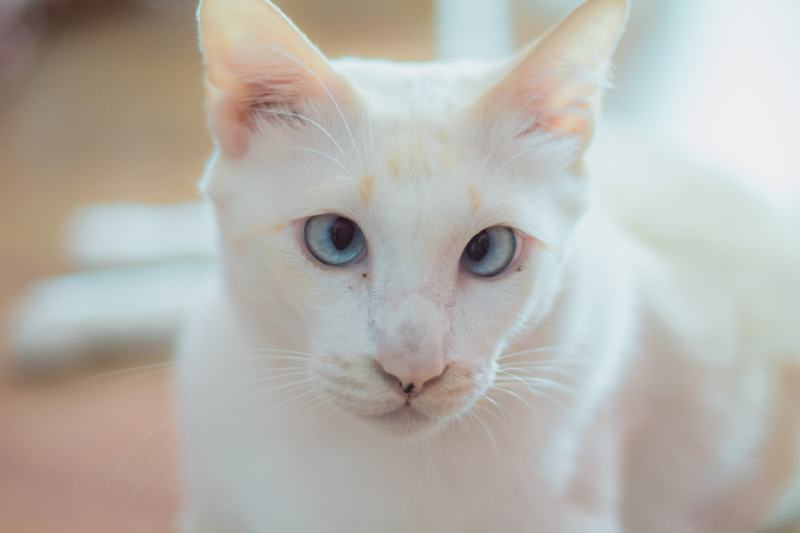Can Cats Eat Spicy Food? Vet-Reviewed Nutrition & Safety Facts
Updated on

If you love your food packed with plenty of heat, you might wonder if your cat feels the same way. Some cats are picky eaters, while others rival dogs when it comes to begging for table scraps. Before you let your cat lick your plate, though, you should make sure whatever they’re about to eat won’t make them sick or worse.
So, can cats eat spicy food? As long as it doesn’t contain toxic ingredients, spicy food usually isn’t dangerous for your cat. However, it can upset your cat’s stomach and irritate their mouth, just like it does for humans, so it’s best not to let them eat it.
Bringing the Heat: Spicy Food and Your Cat
Your cat’s digestive system didn’t develop to handle spicy foods. After all, any prey their wild ancestors caught and devoured didn’t come seasoned with a dry spice rub first! Because of this, spicy foods can wreak havoc on their stomach and intestines, causing vomiting and diarrhea.
Capsaicin, the compound that makes peppers hot, can cause a burning, irritating sensation in your cat’s mouth just like it does for us.1 If your cat gets spicy food in their nose or eyes, it could also be very painful. Due to this—and since your cat shouldn’t eat much human food, anyway—it’s best to avoid giving them spicy foods.
Can Cats Taste Spicy Food?
While we don’t specifically know whether cats can taste spicy food, we do know that their sense of taste is very different from humans. For example, a study showed that cats can recognize bitter, salty, and sour flavors (and that they don’t care for them!) but not sweet ones.
A cat’s sense of taste is also much less sensitive than a human’s overall. Humans have about 10,000 taste buds, while cats only have a few hundred. Because of this, they probably don’t experience the flavor of spicy foods the same way that we do, but digestive issues and irritation are still a concern.

When Spicy Food Turns Toxic
Unless your cat is chowing down on raw hot peppers, they will probably be eating spicy food that contains many other ingredients. Some of those may be much more dangerous than chilis or other hot peppers.
The most common toxic ingredients your cat may encounter include onions, garlic, leeks, and spices or blends made with onion and garlic powder. Foods containing these ingredients are very dangerous for your cat. Eating onions and garlic can cause anemia in cats.
Other spices commonly used in cooking are also hazardous to cats. These include nutmeg, cinnamon, cloves, and allspice. Eating too much salt could also be dangerous to your cat.
Bland But Safe: The Right Diet for Your Cat
So, if your cat can’t share your spicy tuna roll or green curry dinner, what should they be eating?
The ideal food for your cat is a quality, age-appropriate commercial feline diet. While there are plenty of opinions out there regarding what specific diets are best, including canned vs. dry, grain-free, or raw, the most important consideration is that the food is nutritionally balanced for long-term feeding.
Cats are obligate carnivores, meaning they can best absorb nutrients from animal sources rather than plant ones. They do best on a diet high in protein and low in carbohydrates, with a moderate amount of fat. Healthy cats should get all the vitamins and minerals they require from a complete diet, with no need to supplement, so check with your veterinarian before giving multivitamin products to your kitty.
What About Treats?
If you are bound and determined to let your cat share some of your food, the best option is to offer them safe human foods as treats. Keep in mind that treats should make up no more than 10% to 15% of your cat’s total daily calorie intake. This includes any commercially purchased or homemade cat treats, as well as human food.
Safe human foods your cat may enjoy are cooked meat, canned or cooked fish, cooked grains like oats, and fruits like cantaloupe and banana. Avoid feeding your cat raw meat, fish, or eggs because of the potential for dangerous bacteria.
- Chocolate
- Bread dough
- Alcohol
- Grapes and raisins
Now that you know what you can safely feed your cat, it’s just as important to find a bowl that supports their health and well-being. With whisker-friendly bowls and a wide tray to catch any spills, our Hepper NomNom Cat Bowl is our favorite option.
Conclusion
Chances are that your cat won’t be a fan of spicy food in the first place. Even if they are (after all, stranger things have happened), you shouldn’t let them eat much of it because of the potential for vomiting and diarrhea. Feeding too much of any human food—spicy or not—isn’t the healthiest for your cat overall. Find a commercial cat food your kitty enjoys, and stick with that as their primary diet.
- See also: Can Cats Eat Cumin?
Featured Image Credit: shouravsheikh, Pixabay












